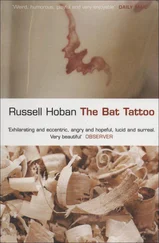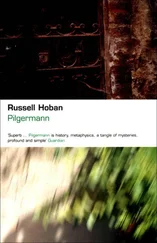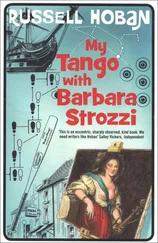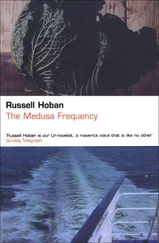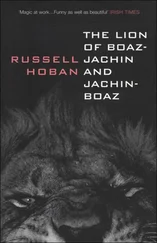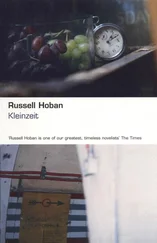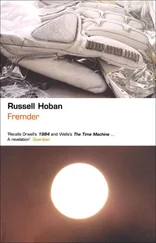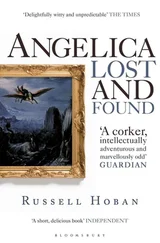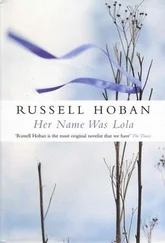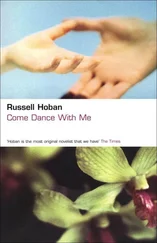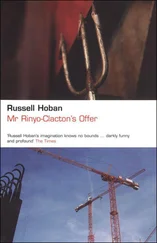On their way out they passed a young couple who were the new occupants of the other table by the window. As the door closed behind Klein and Melissa the woman said to her companion, ‘I wonder what the story is with those two?’
He shrugged. ‘I don’t know but my money’s on Lola.’
Klein walked Melissa back to King’s College, then headed for the tube. As he passed the Arthur Andersen entrance on his way down Surrey Street he encountered a sixtyish man leaning against a white TNT Courier van and swinging his left leg back and forth. ‘Trying to restore the circulation?’ said Klein.
‘Hip’s giving me bother. It’s worse in cold weather.’
‘That building on the other side, up towards the Strand, the one that says PICCADILLY RLY — I’ve been trying to figure out what the RLY stands for. Would you happen to know?’
‘I believe it’s an old defunct railway station that was probably built between the two wars,’ said the courier, ‘around 1920, something like that.’
‘Railway! I’ve never seen it abbreviated that way before. Was it a Main Line station?’
‘No, it’d be one of the Underground stations; they’ve probably diverted the line since then — I don’t think it’s in use now.’
‘Tunnels underneath where we’re standing, and empty tracks going nowhere!’
‘Could be, unless they’ve torn up the tracks. Who knows what’s down there by now, eh?’
Klein went to the HMV in the North End Road, said to the assistant, ‘Have you got a new Ultra Naté CD?’
‘Situation: Critical?’
‘No worse than usual. Do I look that bad?’
‘That’s the title of the album. Did you want it?’
‘Yes.’
When Klein got home he played the first track, listening for a message. He was not disappointed. The beat was steady, the words simple and homiletic, offering such nuggets as ‘Somehow things must change/and it’s got to be for the better …’ The refrain was, ‘Don’t, don’t, don’t you give up.’
‘Songs for simple minds,’ said Klein. He went to where Pegase Noir hung and stood before it. ‘The strangeness of things,’ he said to Redon — ‘I know it was always in your mind and it’s always with me too; I used to think of it as a question that had no answer but now it seems to me that it’s an answer for which no one can imagine the question. The world is full of strange answers and missing questions; each of us is an answer to some unknown question that we have to guess at and get wrong as often as not. Right now I’m the answer to the question, “Who will play Old Fool in a geriatric-sex farce?”’
He looked up Christie’s in the phone book, dialled the number, asked for the expert on nineteenth-century French art, was transferred to a Mr Duclos, and made an appointment to see him the next day. When he put down the telephone and looked across his desk at the painting the winged horse with its darkness and its ascendant colours seemed already to be moving away from him. ‘Going, going, going …’ he said, raising an imaginary hammer. ‘Where am I? The galleries of Angelica’s Grotto no longer interest me; those images seem fraudulent and empty now; what I want is more reality, and it’s not the reality of simple gratification that I’m looking for. When I recall my evening with Melissa it’s the intimacy more than the physical action that I crave more of — to hear her voice, to see her looking at me as if I actually exist, even if it wasn’t real. But I don’t intend to be the Professor-Rath kind of old fool, no indeed. To be a successful old fool you’ve got to play your cards right, you must keep your Lola in suspense sometimes; you must find other things to occupy your mind.’
He had Klimt to occupy him of course but he felt in need of some diversion. Scanning The Times and the Guardian he found an ad for Tango por Dos, a company performing at the Peacock Theatre. He’d seen a theatrical tango programme once before and liked it so he rang up First Call and booked a seat for two days later.
Next afternoon he took the Redon in its frame down from the wall. ‘Like our marriage,’ he said, recalling his dead wife’s words: ‘full of darkness but it flew. I’ve got no one to fly with now, Hannelore. It’s a whole new ballgame, played in the dark.’ He wrapped the painting in brown paper and rang up Dial-a-Cab.
In the taxi he steadied the painting with his left hand while his right hand covered his mouth. ‘I wrapped the painting, I called the cab,’ he whispered. ‘I told the driver to take us to Christie’s but I feel as if all this is being done to me, not by me.’
It goes, said Oannes.
‘What?’ said Klein. ‘What goes?’
No answer.
Basking in the iron-hard December sunlight like a lizard on a rock, Piccadilly took no notice of Klein. St James’s Street was similarly indifferent as was King Street. ‘It may be nothing to you,’ said Klein, ‘but it’s quite a big thing for me.’
Christie’s with its curved and urned pediment, its crimson marquee and banner and its doorman with matching tie, though long familiar, presented itself to Klein as part of another world where everything was in good order and utterly incomprehensible.
The doorman opened the door, took the painting from him, Klein paid the driver, received the painting from the doorman, and went inside. At Reception he was met by Mr Duclos, a pleasant young man wearing a dark suit, a big smile, a look of lightning intelligence, and X-ray eyes.
Mr Duclos conducted him to a further Reception where two vigilant women watched the unwrapping of the painting and ascertained that it was undamaged. Thence to a little square crimson-walled conference room with two framed Christie’s posters, a print of a Cezanne self-portrait and another of a Raphael drawing of the Holy Family. There was a little square table covered in green leather on which stood a gooseneck lamp; there were two chairs.
Mr Duclos leant the painting against the wall, noting from the dust on frame and canvas that it had not been whoring around but had been honorably residential somewhere. He examined the back of the canvas, saw that it had not been lined and bore some decently yellowed labels from reputable dealers. Then he stepped back, regarded the painting with the look of a fond father ready, subject to a DNA check, to embrace a long-lost son, and said, ‘ Ah! Dans son jus.’
‘It’s the real thing,’ said Klein. To him it looked strangely diminished, its colours dim. Mr Duclos picked up the phone and called for a catalogue raisonné, meanwhile finding the signature in its proper lower lefthand corner, noting the rusty nails, the period frame, and other signs of authenticity.
When the catalogue raisonné arrived Mr Duclos traced the provenance of the painting through two French galleries to the private collection in Zurich, followed by ‘Whereabouts unknown’. Klein produced the letter recording the transfer of ownership from the Swiss collector to him, which also showed the painting’s date of entry into the UK.
‘Since 1968, then, this painting has not been exhibited?’ said Duclos.
‘That’s right.’
‘Very good.’ The measurements of Pegase Noir were listed in the catalogue and with a tape measure Duclos verified that the dimensions of the painting matched. He then switched off the lamp, and with an ultra-violet hand lamp he scanned the canvas for pentimenti or other overpainting and found none. ‘So,’ he said, ‘the auguries are favourable and I believe we can do something with this horse; I think this horse is going to fly.’
Читать дальше


